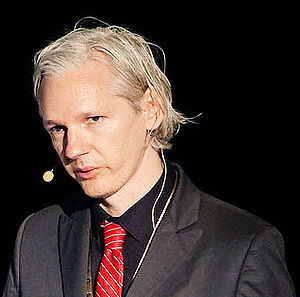On Tuesday a report flickered across Twitter that an Aboriginal community in Western Australia had been "bombed". Wait, What!? The ABC report was that a bomb had been thrown at a group in the One Mile community outside Broome. Three had been injured, one very seriously.
This, one day after the fiftieth anniversary of the March on Washington. An event whose relationship to this report is not fanciful.
I dug around. There was no further reporting. But others, a very few others, had noticed. Bree Blakeman, a Canberra based anthropologist, was tweeting background. There had been another attack, arson, on emergency housing used by Aboriginal people. Local Aboriginal people did believe that their people had been attacked and were scared, she wrote.
Shift forward one day and the event was still not being widely reported. The local ABC then reported that the local police were calling it not a 'bombing' involving "explosives" anymore but 'pyrotechnics'. A 'firework' had somehow caused spinal injuries, burn or blast injuries which exposed bone and a 43 year-old woman had lost the use of her hands. Among the others injured was a 13 year-old girl. They repeated a comment made the previous night, emphasising that it may all have been a "prank" and played down a possible racial motivation.
This comment from the initial report suggests serious police apathy (my emphasis):
I'm looking forward to catching up with the people responsible for this and bringing it to their attention, and also bringing them before the judicial system.The local ABC radio ran a call-in asking listeners if there 'should be more measures in place to stop fireworks and crackers coming into WA [Western Australia]?'
The infrastructure of Aboriginal Australia is a legacy of colonialism and dispossession. Communities which are former missions, gulags originally built for Aboriginal people in the 19th and early 20th centuries where they were to be trained as a second-class workforce. Shanty towns on the fringes of rural towns, like Broome, where segregation existed just like in Dixie and led to 'freedom rides' by Aborigines and concerned whites inspired by the American civil rights movement. Continuing this tradition of segregation, in Broome some white locals still want the 'Aboriginal problem' to be 'out of sight'.
One Mile in Broome is a legacy of what came before. It is part of a impoverished local community, where up to a quarter are homeless, in one of the richest parts of the world, and where sub-standard housing is the norm and its development constantly stalled. A community made poorer by sky rocketing rents and living costs.
Western Australia is rich from mining. Broome is no longer just a very isolated tourist and fishing town but a service centre for vast mines, oil and gas.
Blakeman suggests that one place to look for possible suspects could be "rednecks" flown in from the rest of Australia to work in the nearby giant gas works. She notes that swastikas have been daubed at One Mile.
She also points out that Australian police have form on dismissing attacks, even killings, of Aboriginal people as 'non-suspicious'. It is not just police in rural Australia. Police in Melbourne were caught using racist beer holders and their failures around racist attacks on Indian students caused an international incident. In Sydney, police treatment of Aborigines caused riots in 2004 in the inner-city suburb of Redfern, whose impact continues in the claimed persecution of the family of one of the youth whose death caused the rioting.
That the local police would underline that the Broome attack could be a 'prank' sets off warning signs for many as so many other violent, racist attacks in the past have been thus dismissed.
I will note that what exactly happened in Broome, let alone why, is unclear. A local freelance, Chris Campey, has been reporting and has been careful to simply report and not speculate. It may turn out to be a 'fiework' and a 'prank', though one which definitely has caused serious injury.
But physical attacks on Aboriginal communities are not rare. What they never are is 'terrorism'. If a "bomb" had been reported being thrown at parishioners of Sydney's influential Hillsong church, or at people outside Melbourne's Stock Exchange, it would dominate local media, we would know the names of those hurt, and international media would descend.
Those attacked in One Mile are the most marginal people in Australia. These communities are raw with violence, abuse and death. This is often the only view both Australians and the rest of us see of Aboriginal Australia. That can be damaging, dispiriting and inaccurate. I have written about the other side: the magical collaboration with scientists on Australia's unique history; on the great work being done in building Aboriginal enterprise and economic opportunity; on the breakthrough into the media and artistic mainstream.
But that a "bomb" can be reported as going off in Australia and it simply be ignored because of who it targeted speaks volumes about how far Australia has to go to tackle its ingrained racism.
Update, September 10: Police have ruled out racial motive and describe an "ignited object".
As I wrote, this situation may well have not been racially motivated. This does not take away from the initial and total absence of any reaction to the initial reporting, which would have been different if those reports were coming from anywhere but an Aboriginal community.





















